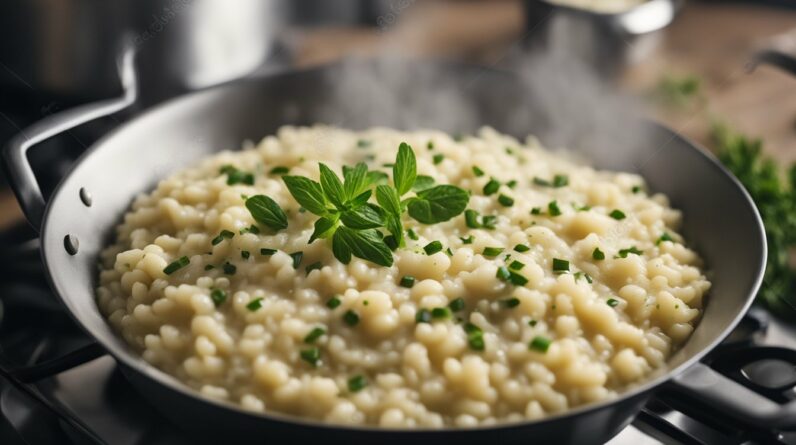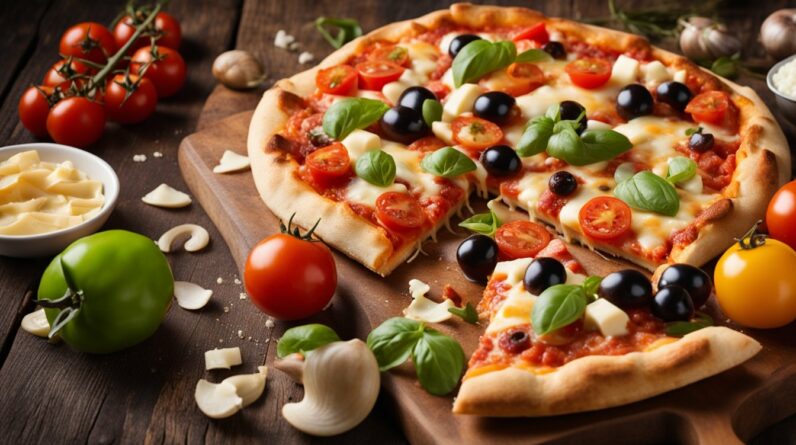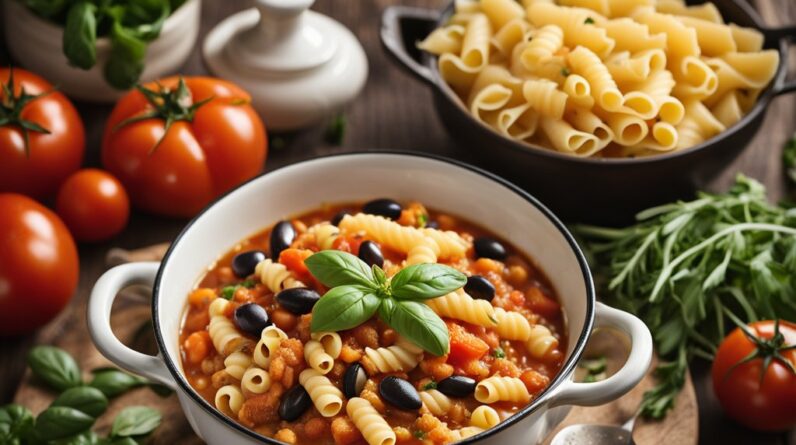Step into the world of Italian cuisine and discover the significance behind the concept of “cucina povera,” or “poor cooking.” This unique culinary tradition arose from the resourcefulness and creativity of peasants who made the most out of humble ingredients to create delicious meals. Unearth the secrets of this age-old cooking style that celebrates simplicity, sustainability, and the beauty of transforming humble ingredients into extraordinary dishes. Embrace the magic of cucina povera as we explore its cultural impact, its connection to sustainability, and its ability to captivate taste buds around the globe.

Definition of Cucina Povera
Cucina Povera, translated as “poor cooking,” is a traditional Italian culinary concept that emphasizes simple, frugal, and yet delicious meals. It is a celebration of making the most out of limited resources and creating flavorful dishes that are accessible to all. Cucina Povera is not merely a style of cooking but a way of life that values sustainability, community, and heritage.
Origin of the Term
The term “cucina povera” originated in rural Italy, particularly in regions that were historically impoverished, such as Tuscany, Umbria, and Sicily. It emerged as a response to economic hardships and scarcity of resources, where people relied on the land and their creativity to make nourishing meals. The concept embodies the ingenuity and resourcefulness of Italian peasant cooking, where every ingredient is cherished, and nothing goes to waste.
Explanation of the Concept
At its core, cucina povera is about making the best of what is available, using humble ingredients in creative ways to create dishes that are surprisingly rich in flavors. It is a testament to the idea that great food does not require fancy ingredients or complicated techniques. Instead, cucina povera celebrates the beauty of simplicity, relying on the quality and freshness of seasonal produce, basic pantry staples, and culinary techniques that have been passed down through generations.
Historical Background
Economic and Social Context
The roots of cucina povera lie in the socio-economic context of rural Italy. Historically, many parts of Italy faced poverty and economic struggles, with limited access to luxury ingredients or elaborate cooking techniques. As a result, the locals had to rely on simple, affordable ingredients that were readily available, such as grains, legumes, vegetables, and foraged herbs. Cucina povera emerged as a way to sustainably feed families and nourish communities while embracing the limitations imposed by economic circumstances.
Influence of Italian Regions
Italy’s rich culinary heritage varies greatly from region to region, and it is no different when it comes to cucina povera. The diverse geographical landscapes and climates of Italy have shaped the regional cuisines, creating unique variations of this frugal cooking style. For example, in the north, polenta, a humble cornmeal dish, takes center stage. In the central region of Tuscany, simple soups like ribollita and minestrone showcase the use of seasonal vegetables and leftover bread. In the south, pasta with beans is a beloved staple of cucina povera.
Ingredients and Techniques
Use of Simple and Affordable Ingredients
One of the defining characteristics of cucina povera is the use of affordable ingredients that are easily accessible, such as legumes, grains, vegetables, and inexpensive cuts of meat. These ingredients form the building blocks of a balanced and nutritious diet, showcasing that flavor and satisfaction can be achieved without relying on expensive gourmet items.
Focus on Seasonal and Local Produce
Cucina povera is intimately connected to the seasonal rhythms of the land, prioritizing the use of fresh, locally sourced ingredients. By embracing seasonal produce, cucina povera not only maximizes flavor but also minimizes environmental impact. The reliance on local produce also fosters a sense of connection to the land and supports local farmers and food systems.
Waste Reduction and Resourcefulness
Another crucial aspect of cucina povera is its commitment to waste reduction and resourcefulness. Every part of an ingredient is utilized, from root to stem, reducing food waste. For example, stale bread is transformed into hearty soups, breadcrumbs, or the base for panzanella, a classic Tuscan salad. This resourcefulness not only helps stretch the budget but also demonstrates a deep respect for the food and its origins.
Traditional Dishes
Pasta e Fagioli (Pasta with Beans)
Pasta e Fagioli, a staple of cucina povera, is a simple yet comforting dish that exemplifies the concept’s essence. It combines humble ingredients such as pasta, cannellini beans, tomatoes, garlic, and herbs, resulting in a hearty and flavorful meal. Pasta e Fagioli showcases the magic that can be created from pantry staples, transforming them into a nourishing dish that has stood the test of time.
Polenta
Polenta, a dish made from coarsely ground cornmeal, is a cornerstone of cucina povera in Northern Italy. It was a vital staple in the diets of Italian peasants, providing sustenance during long winters. Traditionally, polenta is slowly cooked and stirred to achieve a creamy texture, then served with a variety of toppings such as ragu, cheese, or mushrooms. Its versatility and simplicity make it a beloved classic that transcends social classes.
Risotto
Risotto, a creamy rice dish, is a testament to the cucina povera philosophy of creating richness from modest ingredients. Made using short-grain Arborio rice, broth, onions, and sometimes wine, risotto is a canvas for endless variations. Whether it’s a delicate saffron-infused Milanese risotto or a hearty mushroom risotto, this dish showcases the importance of slow cooking and patient stirring to extract maximum flavor and creaminess.
Minestrone
Minestrone, a vegetable-based soup, is a hearty and nutritious dish that exemplifies the seasonal and resourceful nature of cucina povera. The ingredients in minestrone can vary depending on what is available, but typically include vegetables such as carrots, celery, tomatoes, cabbage, and beans. This soup is not only a celebration of the harvest but also a way to utilize surplus produce effectively and minimize waste.
Bruschetta
Bruschetta, a simple and versatile antipasto, is a classic example of cucina povera’s commitment to elevating humble ingredients. It consists of toasted bread rubbed with garlic, drizzled with olive oil, and topped with fresh tomatoes, herbs, and sometimes cheese. Bruschetta encapsulates the essence of cucina povera in its ability to transform a few basic ingredients into a flavorful and satisfying appetizer that can be enjoyed by all.
Panzanella
Panzanella, a salad native to Tuscany, showcases cucina povera’s resourcefulness in utilizing leftover bread. Stale bread is soaked in water, then combined with ripe tomatoes, cucumbers, onions, basil, and a simple dressing of olive oil and vinegar. It is a refreshing and vibrant dish that highlights the importance of salvaging ingredients that would otherwise go to waste.

Nutritional Value
Rich in Vitamins and Minerals
Cucina povera, with its emphasis on fresh and seasonal ingredients, provides a wealth of essential vitamins and minerals. The utilization of a wide variety of vegetables, legumes, and whole grains ensures a diverse nutrient profile in these dishes. From the antioxidants found in tomatoes and leafy greens to the protein and fiber content of legumes, cucina povera promotes overall health and well-being.
Balanced and Satisfying
Despite its humble origins, cucina povera offers balanced and satisfying meals. The combination of complex carbohydrates from grains and legumes, along with the vitamins and minerals from vegetables, creates a well-rounded plate. The addition of small amounts of olive oil, cheese, or lean meats contributes to a well-balanced diet that leaves one feeling nourished and satiated.
Health Benefits of Legumes and Vegetables
Cucina povera’s focus on legumes and vegetables provides numerous health benefits. Legumes, such as beans and lentils, are excellent sources of plant-based protein, fiber, and minerals, while being low in fat. Vegetables, on the other hand, are rich in antioxidants, vitamins, and fiber. Regular consumption of legumes and vegetables has been linked to reduced risk of chronic diseases such as heart disease and certain cancers, making cucina povera not just a tasty cuisine but a healthy one as well.
Cultural Significance
Preservation of Culinary Traditions
Cucina povera plays a vital role in preserving Italy’s rich culinary heritage. It is a testament to the traditions passed down through generations, keeping alive the wisdom and ingenuity of Italian peasant cooking. By embracing simple ingredients and techniques, cucina povera honors the techniques and flavors that have been cherished for centuries.
Celebration of Simple Pleasures
Cucina povera emphasizes the joy of gathering around a table and sharing a meal with loved ones. It celebrates the simple pleasures of good food, good company, and good conversation. Cucina povera reminds us that a meal doesn’t have to be extravagant or expensive to be memorable; it is the connection and the experience that truly matter.
Community and Sharing
Throughout history, cucina povera has fostered a sense of community and togetherness. In times of scarcity, neighbors would come together, sharing the little they had to create a feast. Cucina povera embraces the idea that food is not just sustenance but a catalyst for bringing people together, nurturing relationships, and creating a stronger sense of community.

Environmental Impact
Reduced Carbon Footprint
Cucina povera’s emphasis on local, seasonal ingredients significantly reduces its carbon footprint. By utilizing produce that doesn’t need to be transported long distances and is in abundance during its harvest season, cucina povera minimizes the environmental impact associated with the carbon emissions produced during transportation. By making conscious choices about where our food comes from, we can all contribute to a more sustainable future.
Support for Local Food Systems
Cucina povera serves as a champion for local farmers and food systems. By prioritizing locally sourced ingredients, cucina povera strengthens the connection between farmers and consumers. This support for local agriculture creates a more resilient food system, reducing our dependence on industrial farming practices and preserving the authenticity and diversity of regional cuisines.
Sustainability in Cooking Practices
Cucina povera’s commitment to waste reduction and resourcefulness promotes sustainable cooking practices. By utilizing every part of an ingredient and minimizing food waste, cucina povera ensures that we make the most of our resources. This not only reduces our environmental impact but also encourages a mindset of mindfulness and gratitude towards the food we consume.
Economic Implications
Affordable and Accessible Cuisine
Cucina povera’s emphasis on affordable ingredients and simple techniques makes it a highly accessible cuisine. It is a celebration of the fact that great food doesn’t have to be exclusive or expensive. From the humblest of ingredients, cucina povera creates meals that are flavorful, nourishing, and affordable, making it an ideal choice for those seeking delicious and budget-friendly options.
Revitalization of Local Economies
Cucina povera can play a significant role in revitalizing local economies. By embracing locally sourced ingredients, cucina povera supports small-scale farmers and producers, creating a demand for their products. This boosts the local economy by creating jobs, fostering entrepreneurship, and preserving a way of life that is deeply entwined with the land and its resources.
Promotion of Food Equality
In a world where the access to quality food is often determined by social and economic factors, cucina povera promotes food equality. By celebrating the beauty of simple and affordable ingredients, cucina povera breaks down barriers and highlights the notion that good food should be accessible to everyone, regardless of socio-economic status.

Influence on Modern Cuisine
Incorporation of Cucina Povera Principles
Cucina povera continues to influence modern cuisine around the world. Chefs and home cooks alike have embraced the principles of simplicity, use of affordable ingredients, and waste reduction championed by cucina povera. This influence can be seen in the rise of farm-to-table restaurants, the focus on local and seasonal ingredients, and the trend towards embracing simplicity in cooking techniques.
Embracing Simplicity and Authenticity
Cucina povera has inspired a renewed appreciation for simplicity and authenticity in cooking. In an age of culinary extravagance and complex dishes, cucina povera reminds us of the beauty and satisfaction that can be found in humble ingredients and uncomplicated techniques. This return to simplicity has resonated with many modern chefs and diners who appreciate the honesty and integrity of cucina povera.
Renewed Interest in Traditional Recipes
Cucina povera’s resurgence has sparked a renewed interest in traditional recipes and cooking techniques. People are increasingly seeking to reconnect with their culinary heritage and explore the flavors and traditions of their ancestors. Cucina povera has become a source of inspiration for those looking to create meals that are not only delicious but also sustainable, nutritious, and deeply rooted in cultural heritage.
Conclusion
Cucina Povera, with its emphasis on simplicity, affordability, and sustainability, continues to be relevant in today’s gastronomic landscape. It is a celebration of humble ingredients, resourcefulness, and the joy of sharing meals with loved ones. Cucina povera reminds us of the power of food to connect us to our roots, nourish both body and soul, and contribute to a more sustainable and equitable world. So, let us raise our glasses and our forks in appreciation of the timeless wisdom and deliciousness of cucina povera, a global inspiration for sustainable gastronomy.









